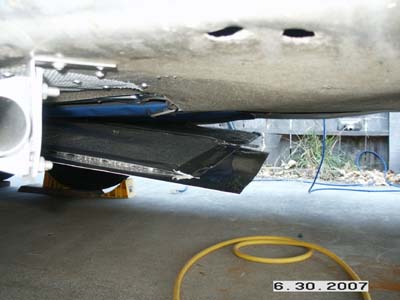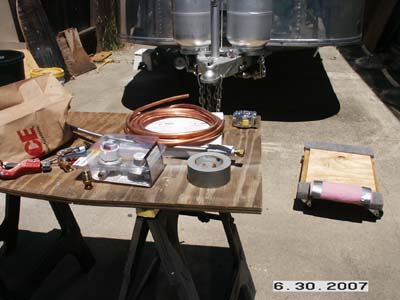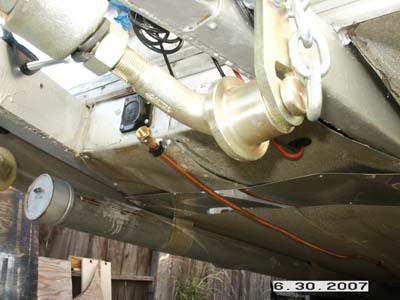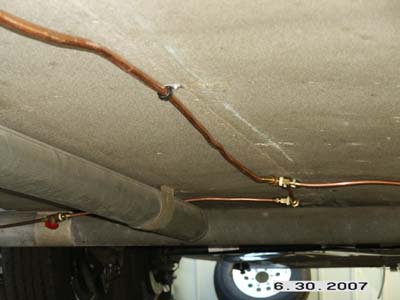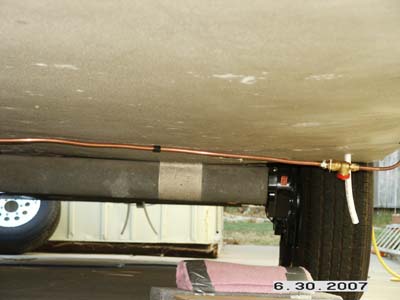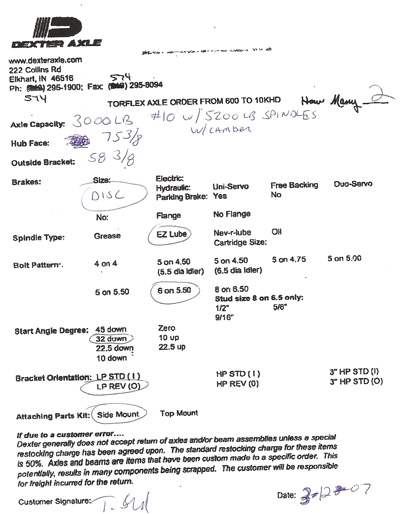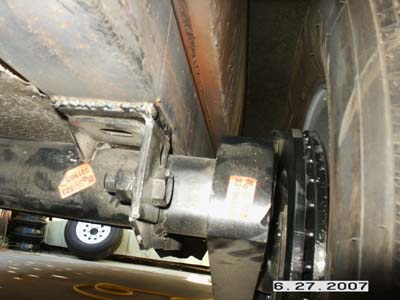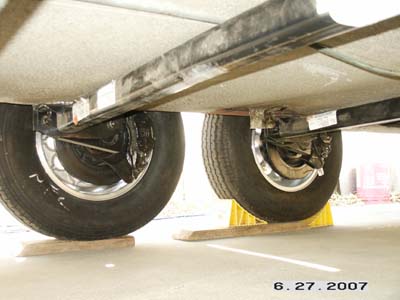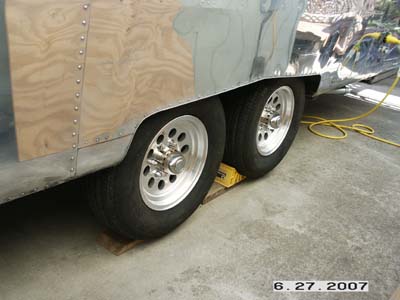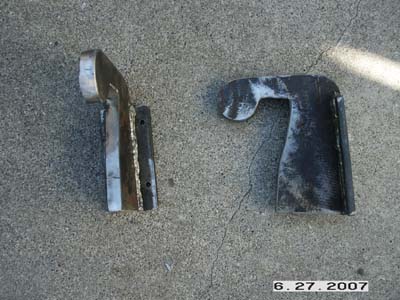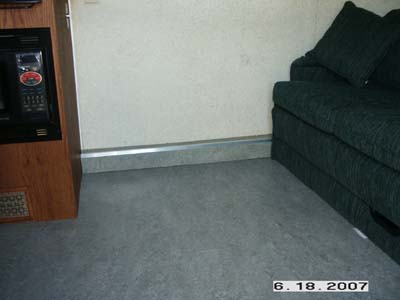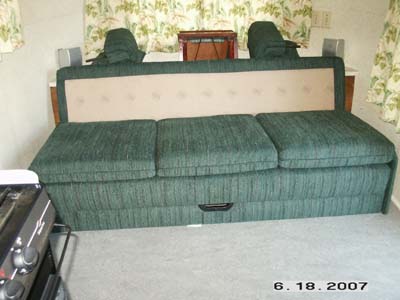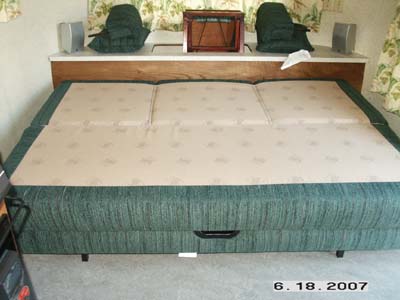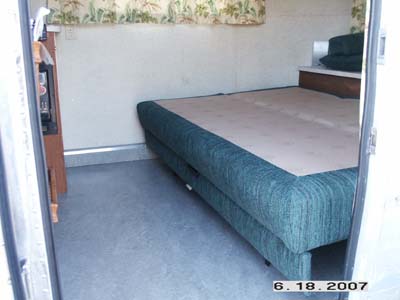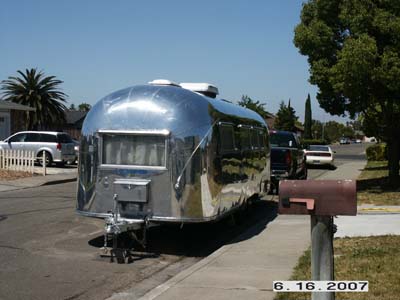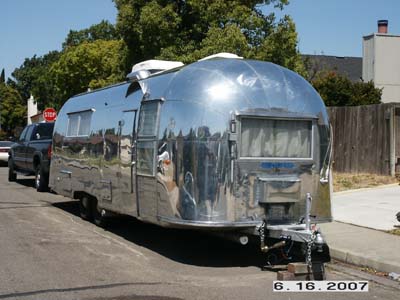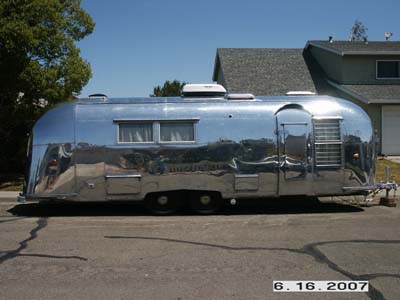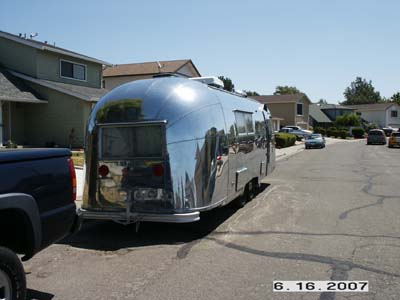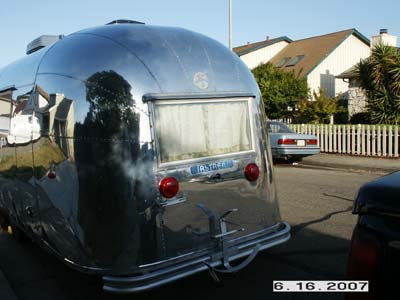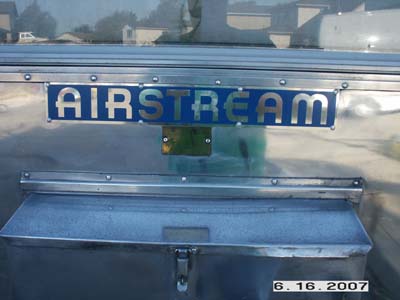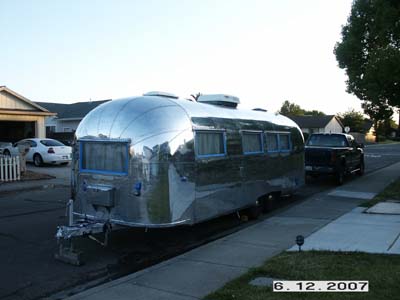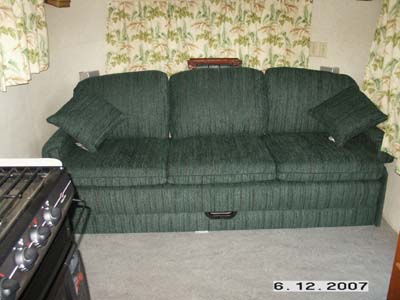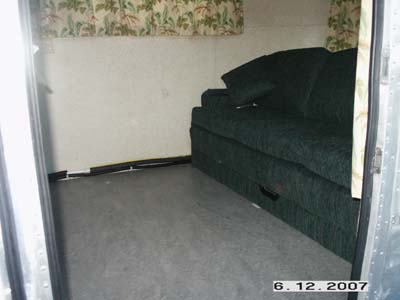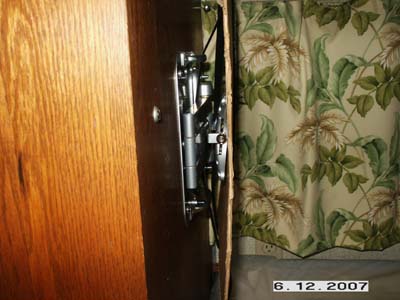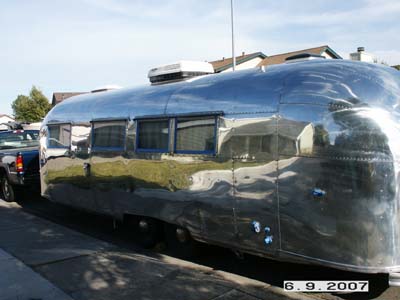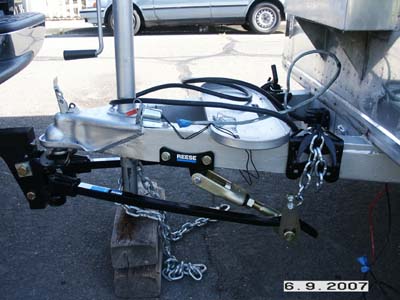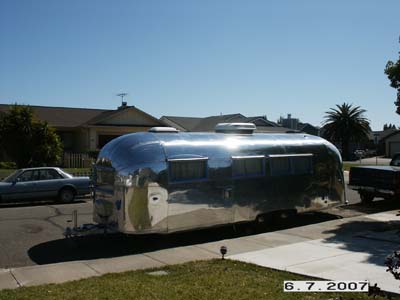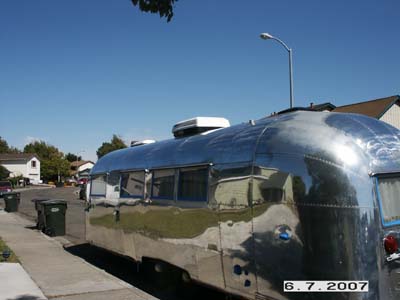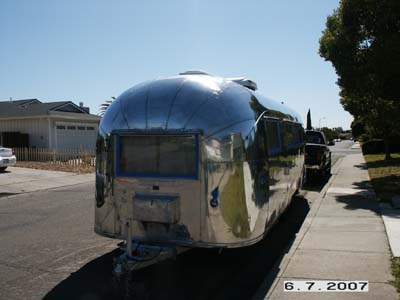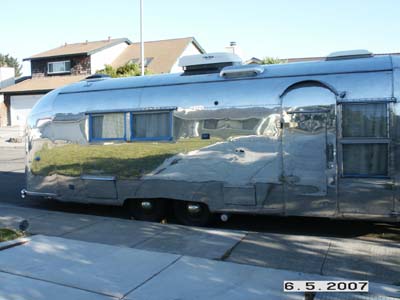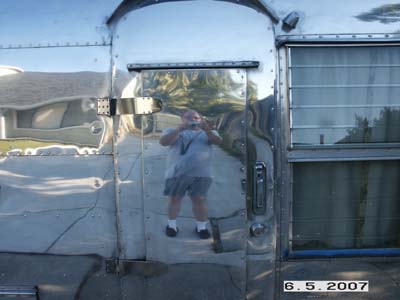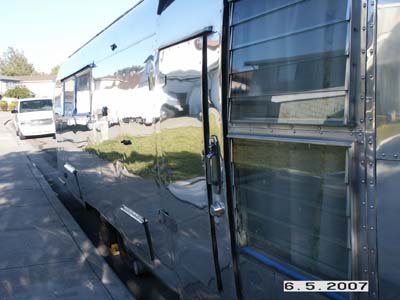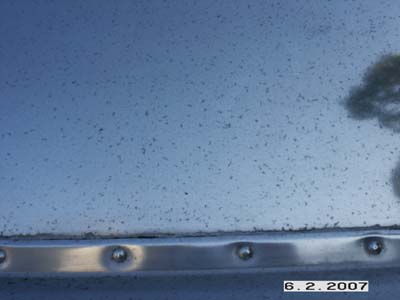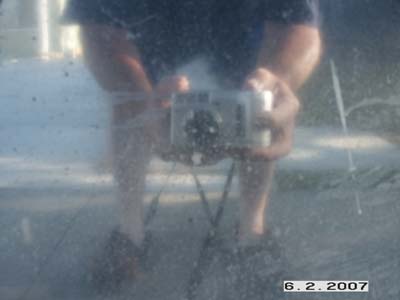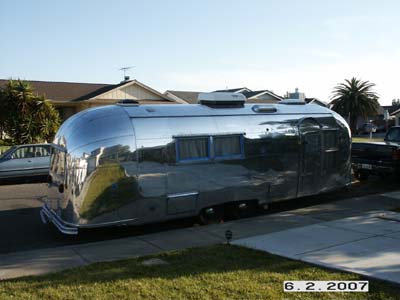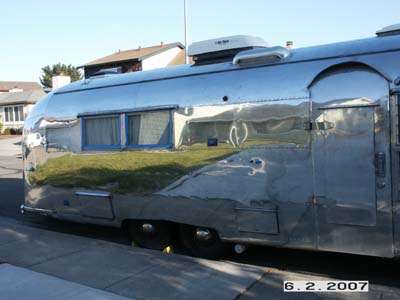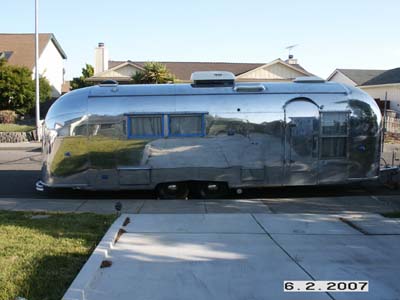Some days, it would be nice just to take the trailer somewhere and say finish it. All thats left is the propane lines, disc brake plumbing, and some bellypan. Lots and lots of little finishing stuff too. But those are the major items to get it useable.
Problem is there is no where to take it to. No where I’d trust anyway. So off I go this morning slugging away.
First thing I did was run two more #6 wires in the belly pan from the street closet to the curbside closet. This is in case I decide I need a second battery. Which I probably will. Expecially since I did all the work of running the wire.
Then was putting up a piece of belly pan over the grey water tank. As usual no small task. You don’t want to screw into the tank! But I needed this done before I ran the propane lines.
So here we go.
You can see I duct taped some of the bubble foil insulation on it first. I figured it couldn’t hurt. It’s just screwed into the crossmembers that surround the tank. I’ll add some rivets as well as soon as they come from Vintage Trailer Supply.
I still have some bellypan in the rear to do, but that will have to wait. We can use the trailer w/o it if needed.
Next up was plumbing the propane. I was going to go back with all new 3/8″ copper. However after talking with Precision Temp about the Jr., they felt 1/2″ would do better. So I ran a 1/2″ main and tee’d off with 3/8″.
Here is my setup. I borrowed a furniture dolly and taped a rolled up towel for a head rest and now I have an easier way to roll around under the trailer. I had my copper, flairing tool, bender, and fittings ready to go.
It’s amazing this stuff takes all day. It always does. And yes I forgot the polsih my new Worthington aluminum tanks. Oh well….
I already had the fridge, Jr., and stove top, stubbed out to the botton of the trailer using 3/8″ lines. So I just had to run the main and tee off as needed.
Usually on torsion axles, which I have now, the propane lines are nicely bent under each axle beam. With my cheap wire bender, I could not do it. I did have enough room to fit my 1/2″ line between the axle beam and the bellypan, with less than a 1/8″ to spare. I don’t think those beams will flex going do the road and smash my lines…. will they?
I’m just short a couple of adapters to the regulator. Perhaps if I have time tomorrow I can pick them up and check the system for leaks.
Here are some photos.
I forgot the mention that I did put shut off valves on everything under the bellypan. So I can turn each item off if needed.
One more thing. I removed all the original propane lines and folded them up and put the aside. Then I noticed some black goo pouring out of them. It was a deep black oily mess. Yuck! I’m glad I did not try and reuse them on my new appliances. Be warned….
Well, thats it… See ya next time….

